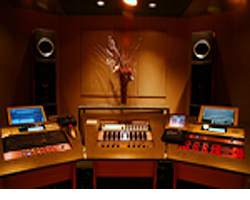I often hear the question (especially from non-engineers), “why do I need mastering?”
This question is puzzling on many layers, but let’s break it down philosophically:
—Does your mix sound radio-ready after you’re done mixing?
—Does your mix fit harmonically and dynamically with the other mixes (on an album)?
—Have you thought about how your audience is going to respond to the mix (especially as compared to the other mixes on an album)?
—Are you prepared to backup, store, and save all relevant masters and archives needed for replication and long-term storage?
These are all very important things to consider about commercial releases and if you are in any way unsure about the answers to any of these questions, those are the areas you should focus on.
Mastering is often seen as a daunting process, full of mystery and ambiguity as to how it actually contributes to the recording process. Once one actually becomes acquainted with the finer details of the mastering process, it becomes abundantly clear that it is as important and meaningful as any other process one might undergo with audio (it just isn’t as immediately recognizable).
Signal Flow
In my experiences, my signal flow for a mastering project usually ends up as follows:
—Initial Low-End EQ – This should be a stereo EQ that most likely has sweepable parameters and control, provides a lot of options for “leveling” the low-end of a mix.
—Initial Low-End Compression – This should be a stereo compressor that you know and trust, especially for slow attack and release times (for dealing with long waveforms – low end).
—Initial High-End Compression – This should be a stereo compressor that you know and trust, and that has reliable low compression ratios, reliable fast-attack/release times and most often a PDR option for varying release times.
—High-End EQ/ Low-End Management – This should be a stereo EQ that is specifically “sharp” sounding (able to cut or boost tight bandwidths efficiently) and should also have a fairly large frequency range.
—Limiting – In my process, this is most often the L1+Maximizer plug-in due to its built in dither and easy accessibility. This can be any stereo limiter that you really trust to polish the final tone of the album (as well as achieve absolute level).
All of these steps in the signal-chain are open and flexible in terms preference. They can be rearranged or substituted with other things. The pre-masters (prints of the EQ and Compression without limiting at the original session bit depths and samples rates) are usually separated from the final Masters (16-bit, 44.1 kHz bounces of the pre-mastered tracks with limiting), which are radio-ready.





















